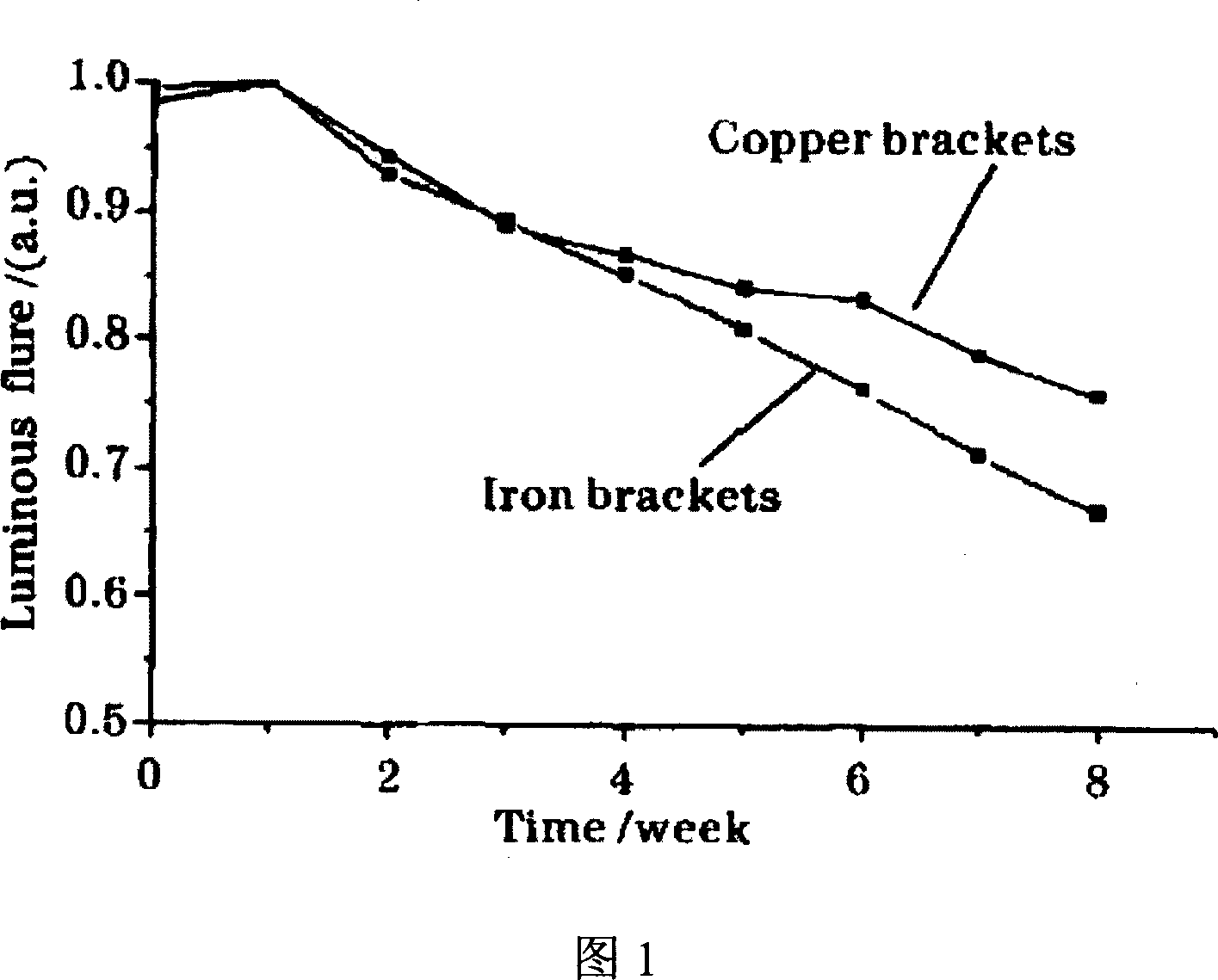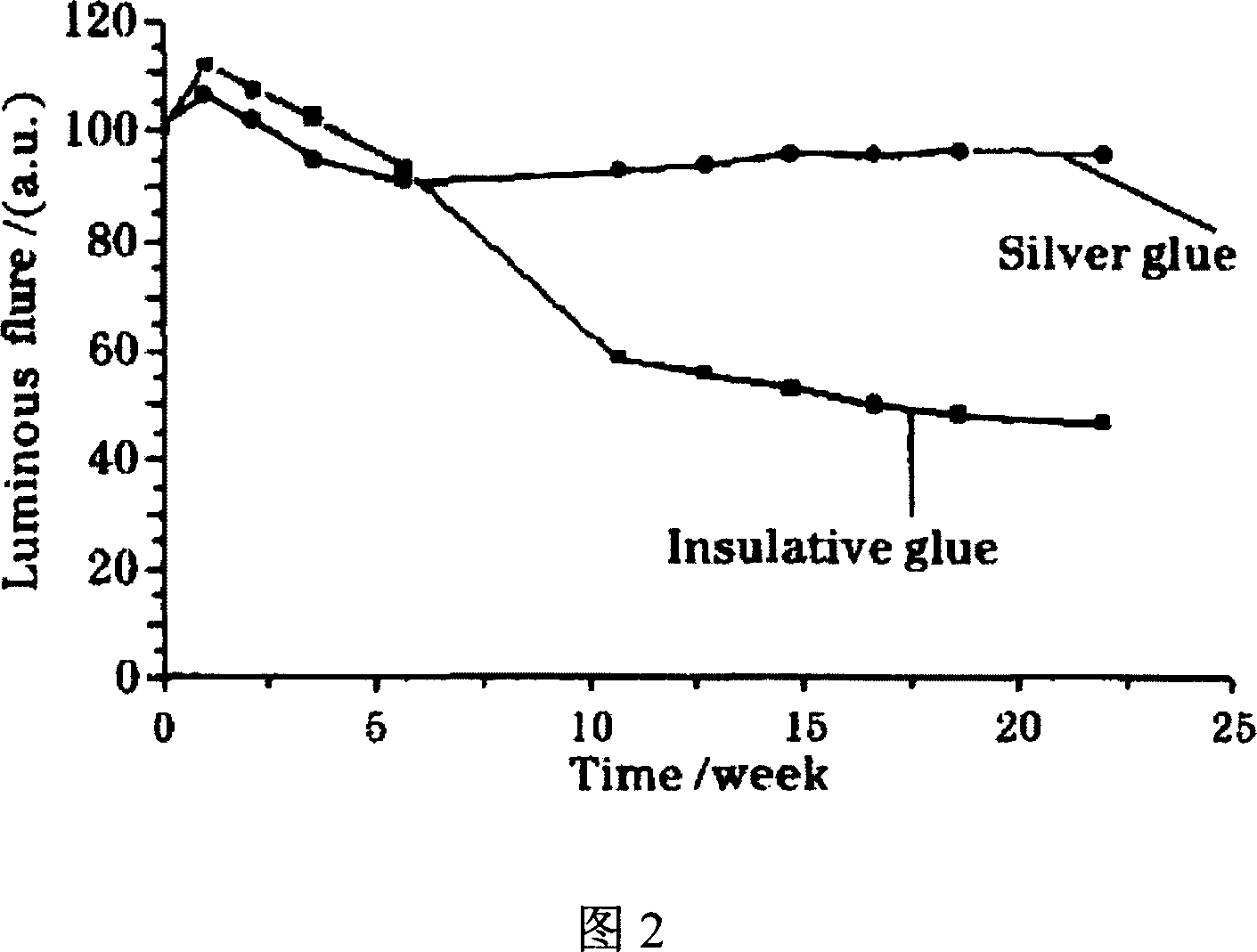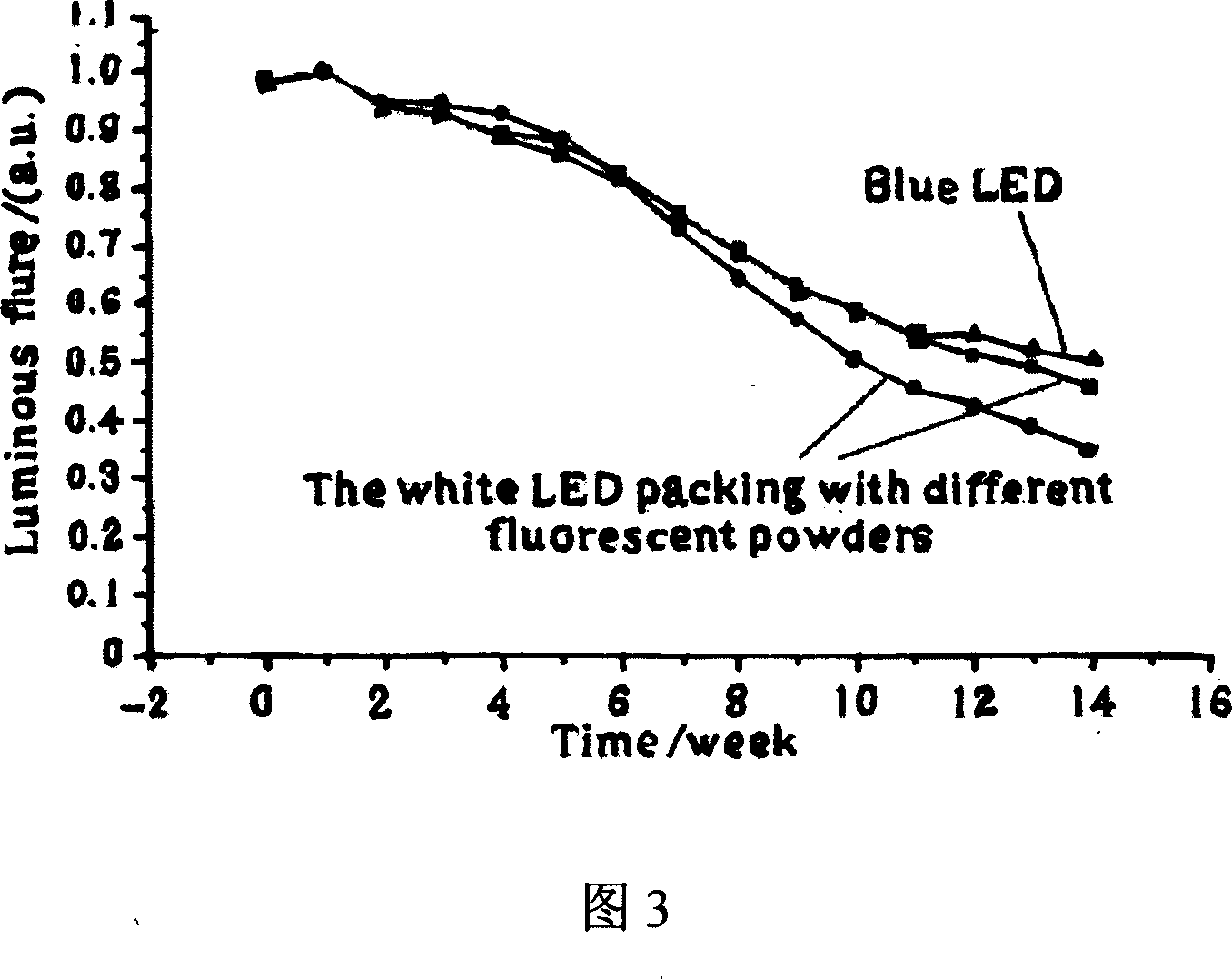Packaging method for white light illuminating diode
A technology for light-emitting diodes and packaging methods, applied in electrical components, circuits, semiconductor devices, etc., can solve the problems of reducing white light-emitting diodes, the lifespan of white light-emitting diodes is not long enough, and limiting the application of white light-emitting diodes, etc. The effect of decay
- Summary
- Abstract
- Description
- Claims
- Application Information
AI Technical Summary
Problems solved by technology
Method used
Image
Examples
Embodiment Construction
[0029] The white light emitting diode packaged according to the packaging method of the present invention includes a bracket, a light emitting diode crystal grain, a powder mixing glue and a fluorescent powder, the light emitting diode crystal grain is fixed on the bracket, the phosphor powder and the powder mixing glue are prepared in proportion, and the The powder compounding glue is prepared by proportioning polydimethylsilicone and curing agent for LED encapsulation.
[0030] Please refer to FIG. 5, the packaging process of the white light emitting diode disclosed in this embodiment includes the following steps:
[0031] Step 1: Dispensing glue, that is, dot insulating glue into the reflection cup of the bracket.
[0032] Step 2: Die bonding, that is, place the prepared die on the support of the insulating glue that has been placed.
[0033] Step 3: Baking after solidifying the crystal, that is, placing the semi-finished product with the solid crystal grain in a high-temp...
PUM
 Login to View More
Login to View More Abstract
Description
Claims
Application Information
 Login to View More
Login to View More - R&D
- Intellectual Property
- Life Sciences
- Materials
- Tech Scout
- Unparalleled Data Quality
- Higher Quality Content
- 60% Fewer Hallucinations
Browse by: Latest US Patents, China's latest patents, Technical Efficacy Thesaurus, Application Domain, Technology Topic, Popular Technical Reports.
© 2025 PatSnap. All rights reserved.Legal|Privacy policy|Modern Slavery Act Transparency Statement|Sitemap|About US| Contact US: help@patsnap.com



